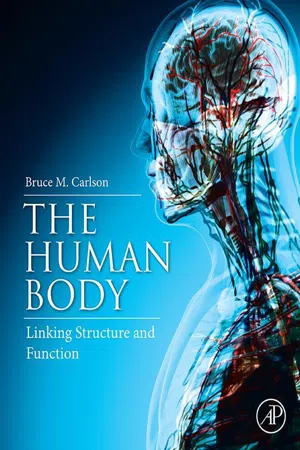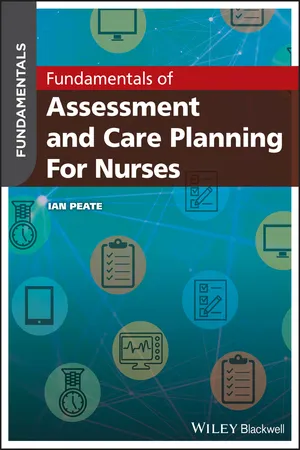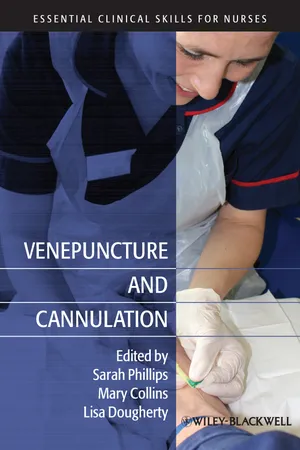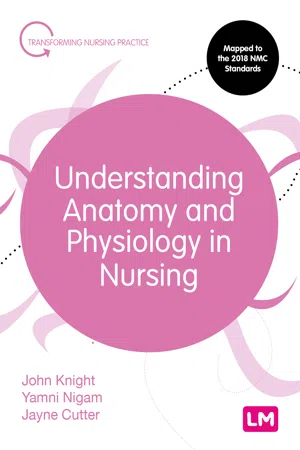Biological Sciences
Circulatory System
The circulatory system is a network of organs and vessels that transports blood, nutrients, and oxygen throughout the body. It consists of the heart, blood vessels, and blood. The system plays a crucial role in maintaining homeostasis by delivering essential substances to cells and removing waste products.
Written by Perlego with AI-assistance
Related key terms
8 Key excerpts on "Circulatory System"
- eBook - ePub
- Erin Odya, Maggie A. Norris(Authors)
- 2017(Publication Date)
- For Dummies(Publisher)
Part 4Exploring the Inner Workings of the Body
IN THIS PART … Look at the anatomical structures of the cardiovascular, respiratory, digestive, urinary, and lymphatic systems. Learn how the blood is moved around and how the body gets things into and out of it. Get familiar with the mechanics of breathing and gas exchange. Make sense of the mechanical and chemical breakdown of food. Understand the importance of the kidneys: urine formation and blood pressure control. Investigate immunity and lymphatic flow.Passage contains an image Chapter 9
The Cardiovascular System: Getting Your Blood Pumping
IN THIS CHAPTERLooking at your blood and what’s in itDiscovering arteries, veins, and capillariesBreaking down the heart’s partsFollowing blood along its path through your bodyLooking at some cardiovascular system problemsMore than any other system, the cardiovascular system has contributed strong imagery to people’s daily language. “Heart” is a metaphor for love and for courage. People say they “nearly had a heart attack” to describe an experience of surprise or shock. Abstract but distinctive characteristic qualities are said to be “in one’s blood.” The blood itself runs cold, runs hot, and runs all over the place in informal speech and poetry. Scientifically speaking, emotions are more a matter of hormones than myocardium, and nobody’s blood is any redder or any hotter than anyone else’s. The heart is neither soft nor hard, but a muscular, fibrous pump, and blood is a complex biological fluid that must be kept moving through its specialized network of vessels. Ready to take a closer look?Getting Substances from Here to There
The functions of the cardiovascular system are all related to transportation. Nearly every substance made or used in the body is transported in the blood: hormones, gases of respiration, products of digestion, metabolic wastes, and immune cells. We discuss these transportation functions in the context of the other organ systems only as they relate specifically to cardiovascular anatomy and physiology. - eBook - ePub
The Human Body
Linking Structure and Function
- Bruce M. Carlson(Author)
- 2018(Publication Date)
- Academic Press(Publisher)
Chapter 10The Circulatory System
Abstract
The Circulatory System consists of blood, the heart and blood, and lymphatic vessels. Blood is formed from stem cells in the bone marrow. The heart pumps blood through its four chambers with the help of valves, which prevent backflow. A conducting system, composed of modified cardiac muscle cells, regulates the nature and frequency of the heartbeat. The structure of the walls of large arteries provides the resiliency to modify the pressures of blood leaving the heart so that blood flow is more even. Smooth muscle in the walls of smaller arteries is also important in regulating blood pressure and the regional distribution of blood. Exchange of gasses and metabolites occurs in capillary beds throughout the body. A network of veins collects blood and returns it to the heart. Most of the blood volume resides in the veins. Lymphatic vessels collect tissue fluids and white blood cells and return them to the circulation through two major ducts. Homeostasis within the Circulatory System is regulated by sensors in the carotid body and carotid sinus.Keywords
Circulatory System; blood; erythrocyte; leukocyte; platelet; plasma; hematopoiesis; heart; atrium; ventricle; conducting system; valves; blood vessel; artery; vein; capillary; lymphatic vessel; blood pressure; coronary circulation; skin circulation; spleen; carotid body; carotid sinusVery simply put, the function of the Circulatory System is to circulate. With very few exceptions (e.g., cartilage, epithelia), the Circulatory System penetrates all areas of the body. Only a few tens of micrometers, at most, separate cells of the body from terminal branches of the Circulatory System.In contrast to most arthropods, which have an open circulation, all vertebrates possess closed Circulatory Systems. A closed Circulatory System consists of three principal components: a pump, a series of closed pipes leading from and back to the pump, and a medium—usually liquid—to be circulated. In vertebrates, the pump is the heart; the outflowing pipes are the arteries, which are connected to the inflowing veins by an extensive network of capillaries; the liquid medium is the blood. In addition, a separate lymphatic system drains tissue fluid from many parts of the body and carries it into the general circulation. - eBook - ePub
- Ruth Hull(Author)
- 2021(Publication Date)
- Lotus Publishing(Publisher)
9 The Cardiovascular System IntroductionEvery cell in the body needs oxygen to survive and there is only one way they can get it – through the blood. In turn, this life-giving substance depends on a small, fist-sized organ to pump it around the body – the heart. This vital organ is very simple in its structure, yet it pumps blood through approximately 100,000 km of vessels to over 60 billion cells. Together, the blood, the heart and its vessels form the cardiovascular system, and in this chapter you will discover the important role this system plays in your body.Student objectives By the end of this chapter you will be able to:• Describe the functions of the cardiovascular system• Describe blood, its components and functions• Describe the heart and explain how it functions• Explain what blood pressure is and how it is maintained• Describe the different types of blood vessels• Explain the different types of circulation• Identify the primary blood vessels of the body• Describe the common pathologies of the cardiovascular system.Did you know? Blood makes up 8% of your total body weight, and an average adult male has 5–6 litres of blood in his body, while an average female has 4–5 litres.Blood Functions of bloodBlood is a liquid connective tissue that is slightly sticky and is heavier, thicker and more viscous than water. It is a vital substance in the body that functions in transportation, regulation and protection. - Ian Peate(Author)
- 2019(Publication Date)
- Wiley-Blackwell(Publisher)
There are many tools available to assist the nurse in making an objective assessment: observation, communication, inspection, and palpation are all key. Report your findings as clearly as possible, documentation of findings according to local policy and procedure is essential as it permits other members of the multidisciplinary team to provide continuity of care. Good documentation is also key for effective, safe, and patient‐centred nursing care (NMC 2018). The Circulatory System The Circulatory System is a complex system that distributes nutrients, gases, and electrolytes as well as removing the waste products of metabolism and other substances. The Circulatory System, according to Nair (2017) includes the heart, the blood, the blood vessels, and the lymphatic system. The blood vessels transport blood throughout the body. Blood contains formed elements and a fluid portion called plasma. The blood vessels form a network that enables blood to flow from the heart to all living cells and then back again to the heart. The blood has many functions, and these include the transportation of nutrients, respiratory gases such as oxygen and carbon dioxide, nutrients, metabolic waste such as urea and uric acid, hormones, electrolytes, and antibodies. As the blood circulates throughout the body, cells are continually removing nutrients, hormones, electrolytes, oxygen, and other substances as well as excreting unwanted waste into the blood. A network of blood vessels leading away from and returning to the heart transports blood through a network of blood vessels. The main types of blood vessels include: Arteries Arterioles Capillaries Venules Veins One other important aspect of the Circulatory System is the lymphatic system. This system drains lymph. The lymphatic system is made up of the lymph vessels, lymph nodes, and lymph glands, for example the spleen and the thymus gland- Erin Odya, Pat DuPree(Authors)
- 2018(Publication Date)
- For Dummies(Publisher)
Part 4Feed and Fuel: Supply and Transport
IN THIS PART … Take the pulse of the cardiovascular system and discover how its internal transit routes carry nutrients and oxygen to every nook and cranny of the body. Delve into the lymphatic ducts and find out about the body’s internal defense forces. Breathe in the details of the respiratory system, including the parts of the respiratory tract (the nose, the sinuses, the throat, and the lungs) and how oxygen finds its way into the bloodstream. Fuel up with food and then study what happens to it in the digestive system after every possible nutrient has been wrung from it. Bat cleanup with the kidneys and track how they remove waste from the body as part of the urinary system.Passage contains an image Chapter 11
Spreading the Love: The Cardiovascular System
IN THIS CHAPTERUnderstanding the heart’s rhythm and structureIdentifying the heart’s chambersChecking out the heart’s conduction systemTracing arteries, veins, and capillariesThis chapter gets to the heart of the well-oiled human machine to see how its central pump is the hardest-working muscle in the entire body. From a month after you’re conceived to the moment of your death, this phenomenal powerhouse pushes a liquid connective tissue — blood — and its precious cargo of oxygen and nutrients to every nook and cranny of the body, and then it keeps things moving to bring carbon dioxide and waste products back out again. In the first seven decades of human life, the heart beats roughly 2.5 billion times. Do the math: How many pulses has your ticker clocked if the average heart keeps up a pace of 72 beats per minute, 100,000 per day, or roughly 36 million per year?Moving to the Beat of a Pump
The cardiovascular system includes the heart, all the blood vessels, and the blood that flows through them. While it is still sometimes referred to as the Circulatory System, that terminology is falling out of favor as our body circulates another fluid, called lymph, through a different system. (Chapter 12 discusses the lymphatic system.) The cardiovascular system functions as a closed double loop. Closed because the blood never leaves the vessels; double because there are two distinct circuits (see Figure 11-1- eBook - ePub
- Ian N Sabir, Juliet A Usher-Smith(Authors)
- 2008(Publication Date)
- WSPC(Publisher)
CHAPTER 5 The Circulatory SystemAll living organisms need to be able to transport nutrients and waste products to and from their cells. Small multicellular organisms are able to rely on simple diffusion for this purpose, while larger organisms have developed Circulatory Systems to overcome the increased distances between cells. Central to such Circulatory Systems is blood, a connective tissue of liquid and cells that acts as the medium for transport. This is then transported around the body in a closed system. In brief, blood travels away from the heart in arteries. These divide into arterioles and then capillaries, which have a large surface area to exchange substances with cells. Blood then enters venules before passing into veins and returning to the heart.In humans, there are two functionally distinct Circulatory Systems (circulations). The systemic circulation delivers oxygenated blood from the left ventricle to the tissues and returns deoxygenated blood from the tissues to the right atrium. The pulmonary circulation delivers deoxygenated blood from the right ventricle to the lungs and returns oxygenated blood back to the left atrium (see Fig. 58 ). Although there are some important differences, the same principles apply to both circulations. We will first consider the systemic circulation then return to the pulmonary circulation.5.1 Flow in the Circulatory SystemJust as Ohm’s law defines the flow of charge along a wire, Darcy’s law defines the flow of volume along a pipe. As with most laws in physics, there are several ideal conditions which must be met (assumptions that must apply) in order for Darcy’s law to be valid: these are dealt with in Further Thoughts. Assuming these assumptions to be true, then:where ΔP = pressure difference driving flow (Pa or mmHg)= flow along the tube (m3 ·s−1 or L·min−1 )Rfluid = resistance to fluid flow (kg·m−2 ·s−2 or mmHg·L−1 ·min).Fig. 58. - eBook - ePub
- Sarah Phillips, Mary Collins, Lisa Dougherty(Authors)
- 2011(Publication Date)
- Wiley-Blackwell(Publisher)
3 Anatomy and Physiology Mary CollinsLEARNING OUTCOMES The practitioner will be able to:- Describe the parts of the Circulatory System.
- Understand the anatomy and physiology of veins.
- Identify veins in the arm and hand.
- Explain the components of blood.
The Circulatory System consists of a network of blood vessels which transport blood and its components around the body. One type of blood vessel, namely veins, give access to the Circulatory System. Veins do not, however, occur in isolation and therefore to avoid causing damage to arteries and nerves, anatomical knowledge is required to ensure adequate care is taken during the assessment and subsequent accessing of the vein for the procedures of venepuncture or cannulation.OVERVIEW OF THE Circulatory SystemThe Circulatory System consists of the pulmonary and the systemic systems. In relation to venepuncture and cannulation the systemic system, the larger of the two, is the most relevant for venepuncture and cannulation. It consists of the heart, functioning as a pump which requires a transport network that is made up of arteries, veins and capillaries to carry blood and its components to and from the tissues (Herbert & Sheppard 2005; Weinstein 2007).The heart is a muscular pump receiving deoxygenated blood from the body via veins that empty into its right chambers. These chambers are known as the right atrium and right ventricle (Marieb 2006). The blood on leaving the atrium and entering the ventricle is prevented from flowing back into the atrium by a valve (tricuspid). The heart pumps the deoxygenated blood out of the right ventricle, via the pulmonary artery to the lungs, where it receives oxygen and excretes carbon dioxide. The oxygenated blood returns to the left atrium and when the heart contracts the blood is forced into the left ventricle, where again a valve (mitral) prevents any backflow to the left atrium. The blood leaves the left ventricle in the aorta and it is carried around the body via arteries (Herbert & Sheppard 2005). - eBook - ePub
- John Knight, Yamni Nigam, Jayne Cutter(Authors)
- 2020(Publication Date)
- Learning Matters(Publisher)
Cardiovascular disease such as that which led to George’s heart attack is a major cause of death and disability throughout the world. Nurses will spend a great deal of their time caring for patients with a variety of both heart and blood vessel disease. Many of the routine physiological measurements carried out by nurses such as recording heart rate, blood pressure and blood oxygen saturation provide snapshots of the patient’s current cardiovascular status.This chapter will begin by describing the major functions of the cardiovascular system before examining the structure of the heart and its associated structures. Once you have an understanding of the anatomy of the heart, we will explore how the heart functions as a mechanical pump and examine the control mechanisms that ensure its optimal function. The second section of the chapter will examine the structure of blood vessels and explain how the cardiovascular system maintains cardiac output to ensure that blood pressure and tissue perfusion are adequately maintained. To reinforce the key points, we will explore the nature of some of the cardiovascular diseases that nurses routinely encounter in clinical practice.Overview of the cardiovascular system
The cardiovascular system (Figure 3.1 , Table 3.1 ) consists of the heart (cardio) and the blood vessels (vascular). It is primarily a pumped system reliant on both the efficient coordinated contractions of the heart and a system of vessels which act as conduits through which the blood is circulated.Heart structure and function
Position of heart within the thorax
The heart has a relatively central position within the thoracic cavity (Figure 3.1
Learn about this page
Index pages curate the most relevant extracts from our library of academic textbooks. They’ve been created using an in-house natural language model (NLM), each adding context and meaning to key research topics.







